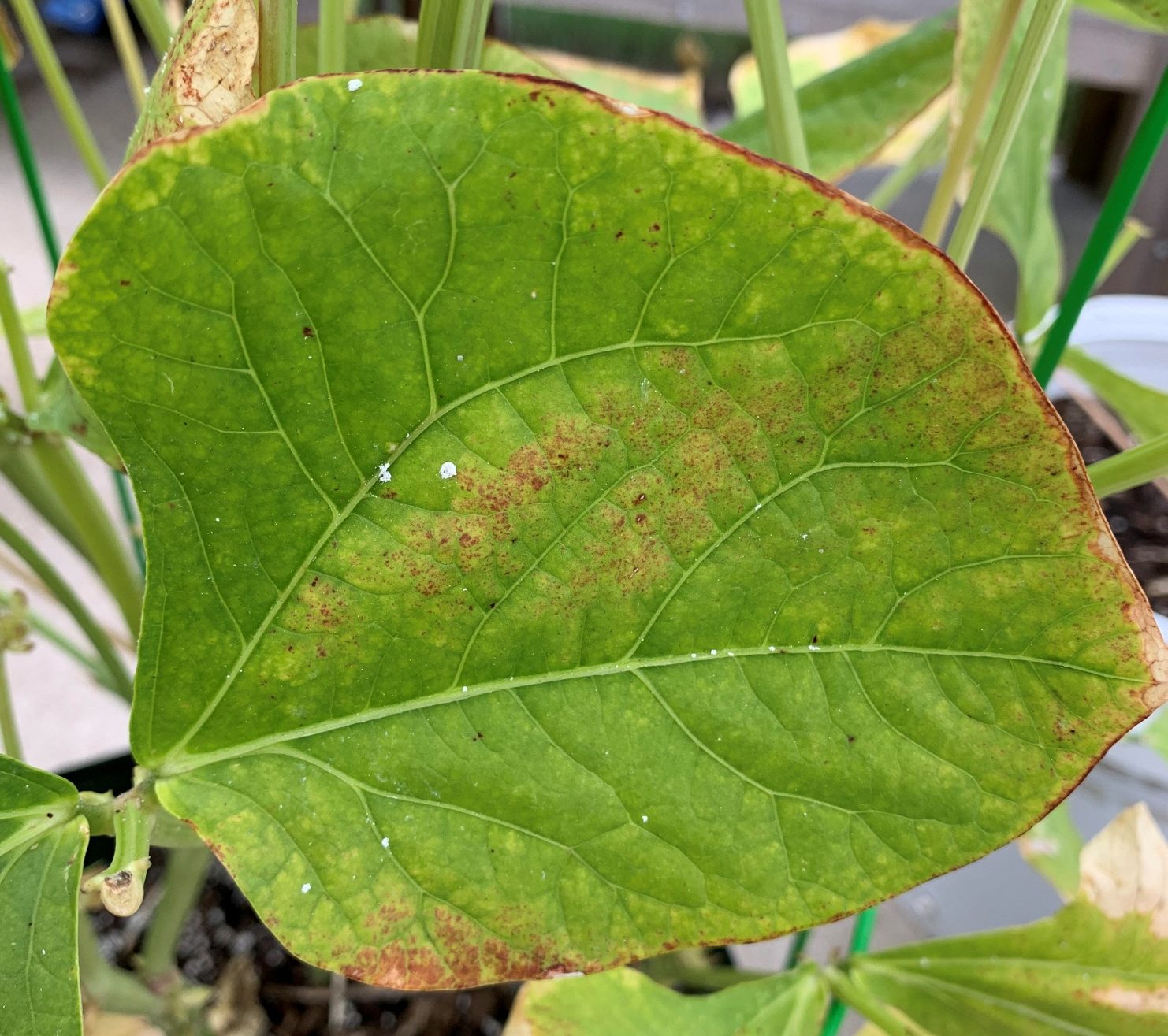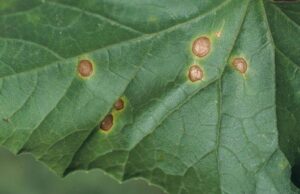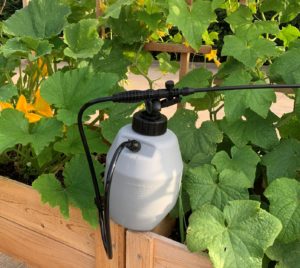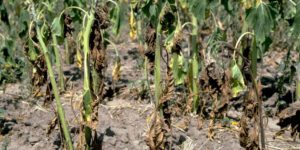Bean rust is a fungal disease that attacks legumes, like black-eyed peas, purple hull peas, green beans, pole beans, fava beans, snow peas, snap peas, etc. The spores, which spread easily, can affect all parts of the plant, including the leaves, pods, stems, and shoots.
Rust fungi have a complicated life cycle, with three to four unique spores and developmental stages. Depending on the particular species of rust fungi, spores may first appear on the underside of the lower leaves as pinhead-sized white or yellow spots called lesions. The lesions will break through to the upper side of the leaf, turning a rust color as they develop. The lesions may also have a yellow halo. As the disease progresses, it will spread to affect the upper leaves as well.
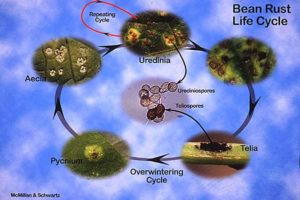
This article contains affiliate links. If you make a purchase using one of these links, I will receive a very small commission at no additional cost to you, and it will help me maintain this website. Rest assured, I only recommend products I actually like!
The fungus can multiply quickly in warm, humid conditions. The spores are transported through air, water, or by contact via contaminated garden tools, pruning sheers, gloves, etc. The spores can overwinter in plant tissue, plant debris, and soil.
Damage
In addition to lesions, the entire leaf will turn yellow, then brown, and eventually shrivel and fall off. The resulting decrease in photosynthesis will lower crop yields. Severe infections may defoliate the plant.
Generally, bean rust affects primarily the leaves. But when there is a heavy infection, stems, branches, and pods may also be affected. The fungus will also weaken the plant, making it more susceptible to other diseases and more vulnerable to pests. Beans that are minimally infected may still be consumed.
Sometimes the damage caused by spider mites is misdiagnosed as bean rust damage. The almost microscopic mites pierce the plant and suck the sap from leaf and pod tissue. The upper surface of the leaves will be stippled, and the underside will have gray webbing that becomes more visible as the infestation of spider mites grows.
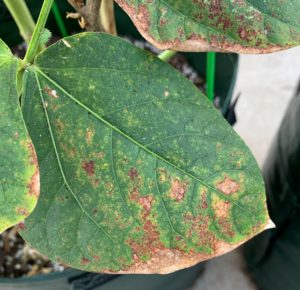
How to Treat Bean Rust
1. Prune affected parts of the plant and dispose of them in the trash. Do not compost them as most piles do not maintain high enough heat to kill the spores.
2. To help minimize the spread of spores, practice good garden hygiene by always sanitizing garden tools, pruning sheers, gloves, etc. that come into contact with an infected plant. A simple bleach solution of 1 part bleach per 9 parts water is a standard disinfectant. Alternatively, isopropyl rubbing alcohol (70-100%) is a quick and easy option. (To learn more about cleaning and disinfecting garden tools and related items, check out this helpful article.)
3. Remove any fallen leaves or debris from around the plant base as chances are it is infected as well. Dispose of it in the trash, and do not compost.
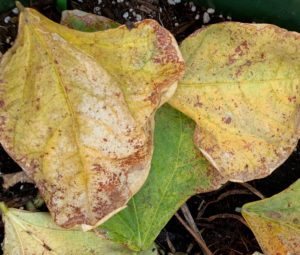
4. If growing in containers, increase the space between plants. Otherwise, space seeds further apart when planting. Bean rust and other fungal diseases, like powdery mildew, are less able to multiply and spread when there is good airflow between plants.
5. Neem oil is an organic fungicide that can be an effective tool against fungal diseases if treated early. To make your own spray, choose a neem oil that is 100% cold-pressed and contains the naturally occurring compound called Azadirachtin so that the treatment will be more effective. Mix 1 to 2 teaspoons of neem oil with 1/2 teaspoon of a Castile soap like Dr. Bonners, to one quart of lukewarm water in a sprayer. Shake well and do a test spray on one leaf and wait 24-48 hours. If there is any adverse reaction, dilute the spray and retest. Apply the spray to all surfaces of the plant, including the underside of leaves and the soil around the plant. Repeat in five to seven days as needed. It is advisable to spray other legumes in your garden, even if they do not show signs of an infection.
6. At the end of the season, remove infected plants and dispose of them in the trash. Do not compost.
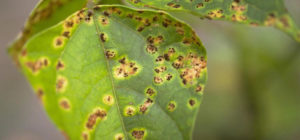
How to Prevent Bean Rust
1. As a preventive measure in early spring, the University of Florida IFAS recommends mixing 4 teaspoons of baking soda with 1 ounce of horticultural oil and 1 gallon of water in a one-gallon sprayer. Mix well and perform a test spray on one leaf and wait 24 to 48 hours. If there are no adverse side effects, spray the plant thoroughly, including the underside of leaves. Note that salts from baking soda can build up on the plant and cause harm, so be sure to monitor the situation and wash off any excess build-up. In addition to being a preventative option, this treatment may also be effective for controlling the spread of rust and other fungal diseases.
2. Water plants in such a way as to eliminate or minimize the splashing of water that spreads fungal spores. Drip irrigation and soaker hoses, for example, are both ideal watering methods. In addition, water in the early morning so that as the day progresses, the surface water will evaporate.
3. Do not plant legumes in the same soil or location in the garden, as the previous year as spores will remain in the soil and be reactivated when the conditions are right.
Bean rust can cause a problem for legumes, especially by reducing crop yield. But if preventative measures and treatment methods are applied early and routinely throughout the season, you will still be able to enjoy a worthwhile harvest.
Thank you for reading this article! If you found it helpful, please consider sharing it with others via email and social media!
